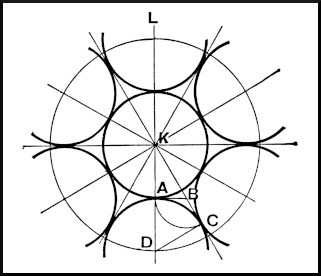Ralph Waldo Emerson? Tryon Edwards? Apocryphal?

Question for Quote Investigator: During one’s lifetime one may discover a truth that appears deep and beautiful. Yet, one must be willing to continuously grow and change. That supposed truth may later seem trivial or misleading. Personal development demands regular reevaluations.
The transcendentalist philosopher Ralph Waldo Emerson made a similar point about a sublime truth metamorphosing into a trivial platitude in the light of new knowledge. Would you please help me to find a citation?
Reply from Quote Investigator: In 1841 Ralph Waldo Emerson published a collection of essays which included a piece about “Circles”. Boldface added to excerpts by QI:1
In nature every moment is new; the past is always swallowed and forgotten; the coming only is sacred. Nothing is secure but life, transition, the energising spirit. No love can be bound by oath or covenant, to secure it against a higher love. No truth so sublime but it may be trivial to-morrow in the light of new thoughts. People wish to be settled: only as far as they are unsettled, is there any hope for them.
Life is a series of surprises. We do not guess to-day the mood, the pleasure, the power of to-morrow, when we are building up our being.
Below are additional selected citations in chronological order.
Emerson’s remark caught the eye of quotation collector Tryon Edwards who placed it in his 1891 compilation titled “A Dictionary of Thoughts: Being a Cyclopedia of Laconic Quotations”. The statement was altered with the addition of the phase “seen to be”:2
No truth so sublime but it may be seen to be trivial to-morrow in the light of new thoughts. — Emerson.
In 1896 Louise Fanger, a columnist in a Kansas newspaper, blended together a set of distinct thoughts from Emerson into a single paragraph:3
“There is no end in nature, but every end is a beginning. There is no sleep, no pause, all things renew. No truth so sublime but it may be trivial tomorrow in the light of new thoughts.” So says Emerson.
In 1921 “The Vancouver Sun” of Canada printed an altered quotation in a box at bottom of a page. This instance used the word “thought” instead of “thoughts”:4
No truth so sublime but it may be seen to be trivial tomorrow in the light of new thought.—Emerson.
Many editions of the compilation from Tryon Edwards have been released during subsequent decades. A posthumous 1936 edition titled “The New Dictionary of Thoughts: A Cyclopedia of Quotations” was revised and enlarged by editors C. N. Catrevas and Jonathan Edwards. The work included an altered statement:5
No truth so sublime but it may be seen to be trivial to-morrow in the light of new thoughts.—Emerson.
In 1987 a Madison, Wisconsin newspaper published an accurate instance with a correct attribution:6
TODAY’S QUOTE: “No truth so sublime but it may be trivial tomorrow in the light of new thoughts.” Ralph Waldo Emerson, American poet, 1841
In conclusion, Ralph Waldo Emerson deserves credit for the passage he published in 1841. Over the years his original phrasing has sometimes been altered.
Image Notes: A set of equal size circles which are tangent to an inner circle and to adjacent circles. Public domain illustration from “Elements of Mechanical Drawing” (1904) by Gardner C. Anthony.
Update History: On March 26, 2025 the format of the bibliographical notes was updated.
- 1841, Essays by Ralph Waldo Emerson, Essay X: Circles, Start Page 301, Quote Page 321 and 322, James Fraser, London. (Google Books Full View) link ↩︎
- 1891, A Dictionary of Thoughts: Being a Cyclopedia of Laconic Quotations, Compiled by Tryon Edwards, Topic: Truth, Quote Page 589, Cassell Publishing Company, New York. (Google Books Full View) ↩︎
- 1896 May 26, Girard Daily Press, The March of Intellect by Louise Fanger, Quote Page 1, Column 2, Girard, Kansas. (Newspapers_com) ↩︎
- 1921 May 27, The Vancouver Sun, (Quotation in a box at the footer of page six), Quote Page 6, Column 1, Vancouver, British Columbia, Canada. (Newspapers_com) ↩︎
- 1936, The New Dictionary of Thoughts: A Cyclopedia of Quotations, Originally compiled by Tryon Edwards, Revised and Enlarged by C. N. Catrevas and Jonathan Edwards, Topic: Truth, Quote Page 663, Column 2, Standard Book Company, New York. (Verified with scans) ↩︎
- 1987 March 11, The Capital Times, (Quotation located on top right of page), Quote Page 15, Column 1, Madison, Wisconsin. (Newspapers_com) ↩︎